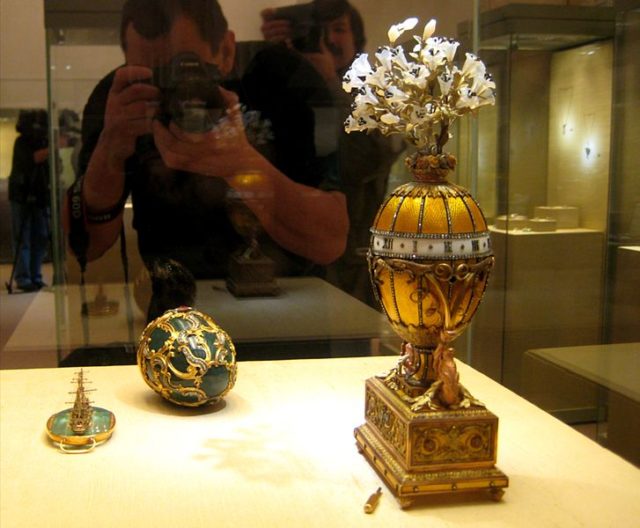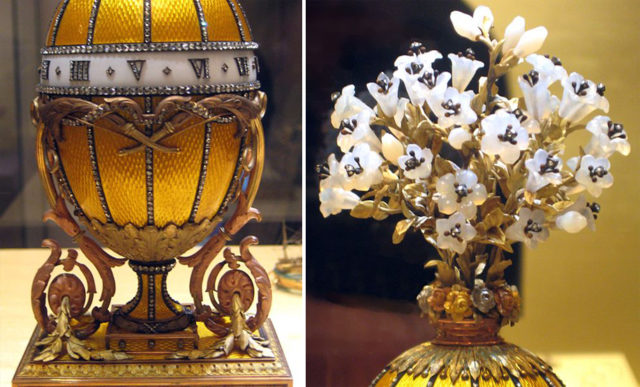Imperial Faberge Eggs, known also as Tsar’s Fabergé Eggs, are considered masterpieces of the jeweler’s art and a symbol of extravagance and luxury.
It all started when Alexander III, with an intention to celebrate Easter, started a tradition that turned into one of the most precious and luxurious collections in the world.


The Bouquet of Lilies Clock Egg, also known as the Madonna Lily Egg, is a jeweled Easter egg (one of the larger Faberge eggs) made of varicolored gold, platinum, rose-cut diamonds, white onyx, translucent yellow enamel and opaque white enamel given by Tsar Nicholas II as an Easter gift to his Empress, Alexandra Fedorovna in 1899.
Being the capstone to her collection, it is one of the few eggs that the Russians managed to preserve and protect.


The egg-shaped clock and its rectangular pedestal are decorated with translucent yellow-gold enamel on a guilloche background. It is designed as a vase with red-gold scrolls serving as extra supports on each side. It is crowned with a delicate bouquet of Madonna lilies, carved from onyx. All the flowers on the egg are carefully placed.
The roses were symbols of love and the lilies were a symbol of purity and innocence. The pistils of the flowers are set with three small diamonds, and the leaves and stems are made of tinted gold. The flowers, combined with burning torches, suggest the virtuous flame of family love.

A diamond and enameled belt with twelve diamond-set Roman numerals I- XII revolves around the perimeter of the Egg, indicating the time.
A gold key was used to wind the mechanism. It is one of the rare and few that never left Russia and is currently held in the Kremlin Armory Museum in Moscow, as one of the few Fabergé eggs that have never left Russia.
